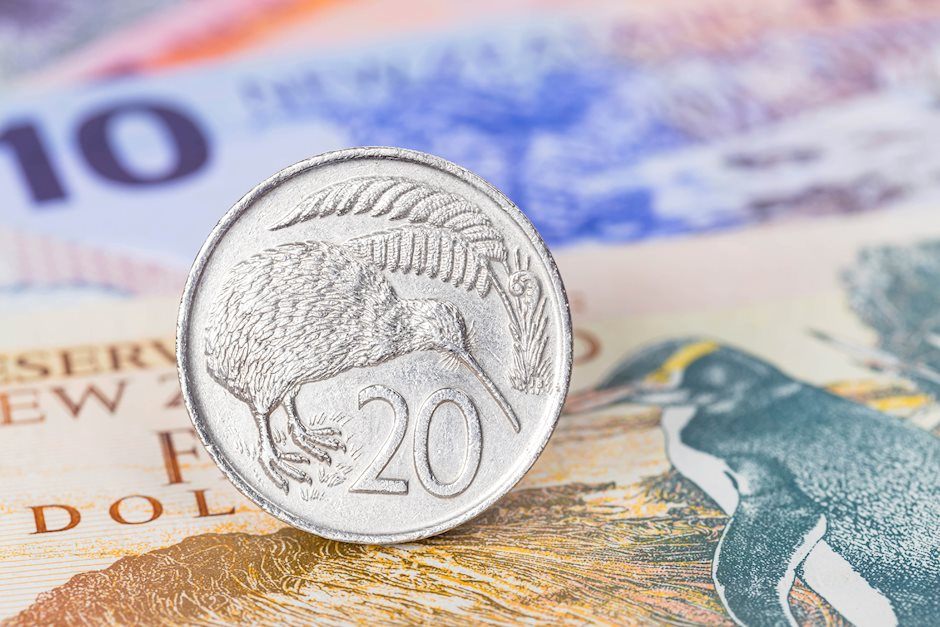NZD/USD strengthens near 0.6200, all eyes on Fed rate decision
- NZD/USD gains ground near 0.6190 in Wednesday’s early Asian session.
- The Fed is anticipated to reduce its borrowing costs on Wednesday.
- New Zealand’s GDP will be released on Thursday, and it is projected to contract by 0.4% QoQ in Q2.

The NZD/USD pair attracts some buyers around 0.6190 on Wednesday during the early Asian session. The resumption of the US Dollar (USD) weakness amid firmer bets of the Federal Reserve (Fed) rate cut provides some support to the pair. Investors will closely monitor the Fed interest rate decision on Wednesday.
The Fed will likely cut interest rates at its September meeting on Wednesday after holding the rate steady within a target of 5.25% and 5.5% since July 2023. Fed Chair Jerome Powell said at Jackson Hole, “The time has come for policy to adjust.” He further stated that “the direction of travel is clear, and the timing and pace of rate cuts will depend on incoming data, the evolving outlook and the balance of risks.”
Fed officials will also release a Summary of Economic Projections, or ‘dot-plot’ after the policy meeting, which could give insight into just how much the US central bank plans to cut over the next year. The expectation of the jumbo rate cuts might exert some selling pressure on the Greenback in the near term.
On the Kiwi front, a bleak outlook in the Chinese economy after the disappointing economic data might cap the upside for the China-proxy New Zealand Dollar (NZD). Investors will take more cues from New Zealand's Gross Domestic Product (GDP) for the second quarter (Q2), which is due on Thursday. The GDP number is estimated to contract by 0.4% quarter-on-quarter in Q2 following a 0.2% expansion in Q1. However, a surprise upside in GDP reading could boost the NZD against the USD.
New Zealand Dollar FAQs
The New Zealand Dollar (NZD), also known as the Kiwi, is a well-known traded currency among investors. Its value is broadly determined by the health of the New Zealand economy and the country’s central bank policy. Still, there are some unique particularities that also can make NZD move. The performance of the Chinese economy tends to move the Kiwi because China is New Zealand’s biggest trading partner. Bad news for the Chinese economy likely means less New Zealand exports to the country, hitting the economy and thus its currency. Another factor moving NZD is dairy prices as the dairy industry is New Zealand’s main export. High dairy prices boost export income, contributing positively to the economy and thus to the NZD.
The Reserve Bank of New Zealand (RBNZ) aims to achieve and maintain an inflation rate between 1% and 3% over the medium term, with a focus to keep it near the 2% mid-point. To this end, the bank sets an appropriate level of interest rates. When inflation is too high, the RBNZ will increase interest rates to cool the economy, but the move will also make bond yields higher, increasing investors’ appeal to invest in the country and thus boosting NZD. On the contrary, lower interest rates tend to weaken NZD. The so-called rate differential, or how rates in New Zealand are or are expected to be compared to the ones set by the US Federal Reserve, can also play a key role in moving the NZD/USD pair.
Macroeconomic data releases in New Zealand are key to assess the state of the economy and can impact the New Zealand Dollar’s (NZD) valuation. A strong economy, based on high economic growth, low unemployment and high confidence is good for NZD. High economic growth attracts foreign investment and may encourage the Reserve Bank of New Zealand to increase interest rates, if this economic strength comes together with elevated inflation. Conversely, if economic data is weak, NZD is likely to depreciate.
The New Zealand Dollar (NZD) tends to strengthen during risk-on periods, or when investors perceive that broader market risks are low and are optimistic about growth. This tends to lead to a more favorable outlook for commodities and so-called ‘commodity currencies’ such as the Kiwi. Conversely, NZD tends to weaken at times of market turbulence or economic uncertainty as investors tend to sell higher-risk assets and flee to the more-stable safe havens.
Author

Lallalit Srijandorn
FXStreet
Lallalit Srijandorn is a Parisian at heart. She has lived in France since 2019 and now becomes a digital entrepreneur based in Paris and Bangkok.

















